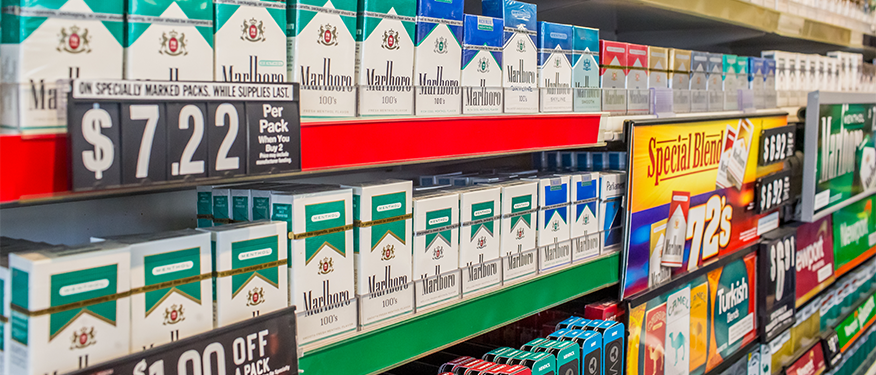Estimated reading time: 3 minutes
The Federal Drug Administration (FDA) conducts inspections of tobacco product retailers to determine their compliance with federal laws and regulations. During these inspections, an underage secret shopper attempts to buy a tobacco product without an ID. Retailers may not even know they’ve been inspected.
If they pass inspection, no notice is sent to a tobacco retailer and, in some cases, violation letters can be missed or hidden from a store owner by an employee. Retailers are able to check if they’ve been inspected using the Compliance Check Inspections of Tobacco Product Retailers.
In 2022, the FDA issued civil money penalties to several e-cigarette companies after new legislation affirmed the FDA’s jurisdiction over tobacco products. The push to increase enforcement of tobacco sales laws does not apply only to manufacturers, but to retailers as well.
Of all retailers inspected for compliance in 2022, nearly 1 in 5 (18,089) failed. While c-stores and gas stations are the primary purchasing location for most tobacco users, they are also the most likely retailers to fail tobacco compliance checks.
Some statistics on tobacco violations:
- 99.68% of convenience stores sell cigarettes
- $575,000 in tobacco sales per store
- Over 34% of all convenience store sales were tobacco products
- Tobacco sales are growing nationwide
What happens if you fail an FDA tobacco compliance inspection?
Failing a tobacco compliance inspection can cost retailers up to $22,000 in fines for violators per location. As of 2023, each violation will cost:
- First violation: Warning letter, $0 penalty
- Second violation: $320 penalty
- Third violation: $638 penalty
- Fourth violation: $2,559 penalty
- Fifth violation: $6,397 penalty
- Sixth violation: $12,794 penalty
The FDA can also place a No-Tobacco Sales Order (NTSO) on a store, revoking its right to sell tobacco products. Being unable to sell tobacco can lead to:
- Over $40,000 in lost tobacco profits
Tobacco is the largest selling category at convenience stores, totaling 41% of industry sales with the average c-store selling $575,435 worth of tobacco products. Assuming an average 7% Gross Profit Margin (GPM) on cigarettes, having a tobacco license revoked for even one year in one store eliminates over $40,000 of profit.
- Additional loss in retail profit
Additionally, the loss of tobacco customers due to an NTSO reduces profit from higher GPM items.
Packaged beverages and gum/mints are the most purchased non-tobacco items by tobacco consumers. The average packaged beverage GPM is 44% and the average gum/mints GPM is 49%.
So, what does this mean for c-store owners? Because c-store customers have an average basket size of 2.6, stores that are unable to sell tobacco products are losing out on the additional profit created by those destination shoppers.
How to maintain retail tobacco compliance?
Retailers can utilize new technologies to help maintain tobacco compliance. For example, Loss Prevention Analytics (LPA) automatically captures and flags video footage of the register during age-restricted sales.
LPA works by connecting to your store’s point-of-sale and back-office systems to help provide a complete picture of restricted sales compliance. The system automatically captures video of the register at the time of a sale and assembles that video into a virtual log of all transactions. The system flags risk-events, like age-restricted sales, for easy review. From this, retailers can identify and correct any out-of-compliance sales practices.
To learn more about preventing violations with Loss Prevention Analytics, request a demo with our team.
Related Articles
- Do C-Stores and Gas Stations Violate Tobacco Laws More than Others?
- What is the Synar Amendment?
- How End-to-End Cloud-Based Integration Helps Retailers Meet Customer Demand, Manage Margins, and Prepare for the Future
- The Risks of Avoiding EMV Compliance at Gas Stations
- Top 8 Reports for Running a Successful Convenience Store


